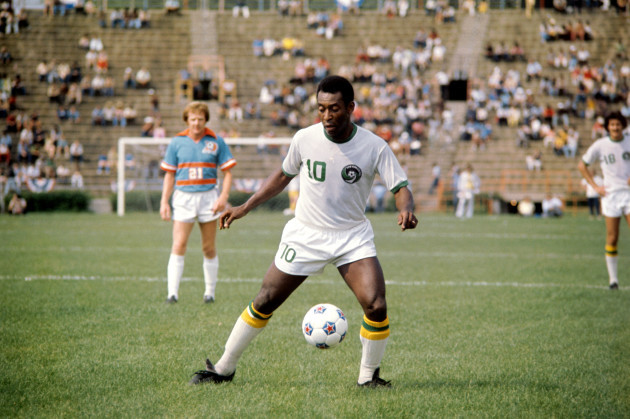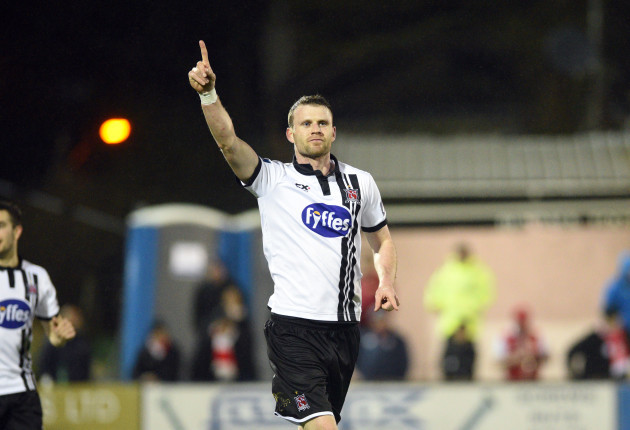THE ACRONYM ‘NASL’ may conjure romantic images of Pele, the New York Cosmos and the league’s giddy mid-1970s pomp but those nostalgia-tinted memories don’t really paint an accurate picture.
Conceived in 1968, it took eight seasons for average attendances to even hit five figures. The top brass felt expansion was the key and every franchise spent big on high-profile players who were long past their prime – their bloated salaries matching their waistlines. But the early-1980s coincided with economic collapse. The NASL lost its national TV contract and in 1984, just nine years after Pele had arrived to much optimism, the competition folded and it wasn’t until Major League Soccer (MLS) arrived in 1996 that a professional football league returned to North America.
MLS was designed as a safe haven, a place that would avoid the recklessness that plagued the NASL. A single-entity, the league owned the players’ registrations. There was a heavily-criticised salary cap too. The emphasis was on protection. And that remains the case to this day. It has developed, expanded but is purposely isolated. Without promotion or relegation, teams and owners are incredibly well-protected. Essentially, it can be a relatively costly investment (expansion teams now pay a fee of about $150m and that’s excluding stadium, personnel, etc) but a risk-free environment once you’re in the door.
And its separation from the rest of the continent’s football pyramid has led to many problems.
Without promotion/relegation, it’s hard to divide the other leagues into ‘tiers’. But, in 2011, there was a split in the lower echelons and two leagues began operation. A new NASL league was issued Division II status by governing body US Soccer while the United Soccer League (USL) was granted Division III status.
After an ominous period of peace and tranquility, things have been chaotic over the last twelve months.
In 2013, MLS and USL formalised a partnership that would see many MLS sides commit reserve teams or local affiliates to the third tier. And ever since, the USL has steadily blossomed. Costs are lower, the litany of teams (currently 30 divided into two conferences) means more protection and the MLS relationship ensures access to excellent resources and staff.
Caught in the middle is the NASL. The league promised much and made a point of distancing itself from MLS. There was private ownership, no salary cap and repeated calls for promotion and relegation to . But its positioning has led to headaches. The most successful teams (Montreal Impact, Minnesota United) were easily identifiable as ‘MLS material’ and subsequently made high-profile switches. And other solid, well-run and well-supported sides (Ottawa Fury, Tampa Bay Rowdies) were spooked enough by what happened at the tail-end of last year that they decided to seek refuge in the USL.
Last December it looked like the NASL was set to collapse. In spite of new teams in Miami and Oklahoma, attendances dropped. The storied Cosmos – the most successful team in the re-branded league and who claimed the title in 2016 – couldn’t even break the 4,000 mark. Fort Lauderdale and Oklahoma announced they wouldn’t be back in 2017. And that’s when Ottawa and Tampa Bay jumped ship.
The USL moved quickly to make their mark and capitalise. After pushing the governing body, they were also awarded Division II status.
But, despite only having eight teams ready for the 2017 season (Division II status requires at least 12), the NASL were granted a late, late reprieve by US Soccer on the condition that they would meet certain conditions within a pre-determined timeframe.
However, earlier this month, US Soccer denied the NASL’s application for Division II status for the 2018 season. The league had confirmed new teams in San Diego and Orange County for next term (meaning 10 teams overall) but it seemed they were still seeking some leeway from their governing body. And US Soccer’s decision to not play ball now leads to inevitable questions about the NASL’s immediate future. Again.
The league have now filed an antitrust lawsuit against US Soccer and is seeking an injunction against their ruling.
There are a number of Irish players currently plying their trade in the NASL.
Former Sligo Rovers midfielder Richie Ryan is a crucial element in Alessandro Nesta’s Miami FC alongside former Northern Ireland international Johnny Steele while Colin Falvey and Eamon Zayed are equally-integral parts of the Indy Eleven side.
Former Shamrock Rovers and Dundalk striker Ciaran Kilduff only joined the Jacksonville Armada in July.
It remains to be seen how all the pieces will fall but it’s hardly an ideal situation for clubs or players. Just like this time last year, the future of the NASL is cloudy at best.
What is sure to make it worse for everyone involved is that there are plenty of questions about what happens next but not many answers.
Subscribe to The42 podcasts here:



